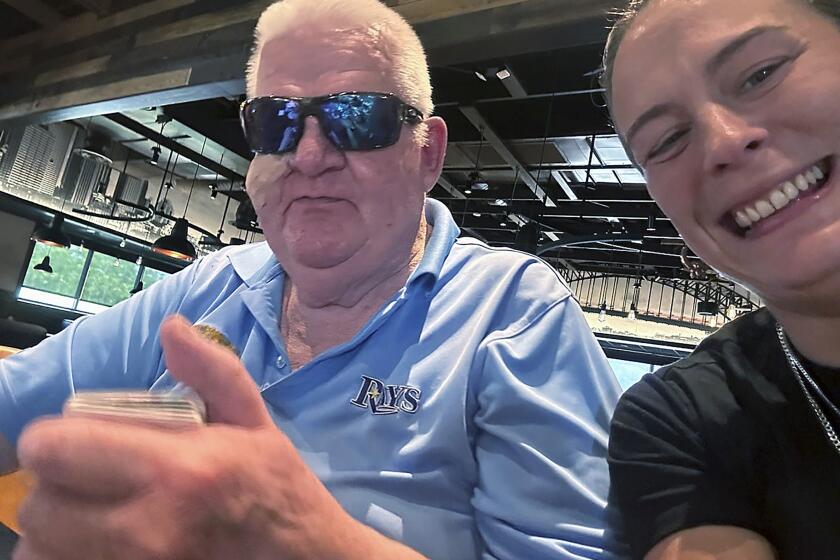Father and Son Armorers Preserve Craft at Tower of London
LONDON — Much lies behind the Tower of London’s mustached Beefeaters, cobblestone lanes and ravens, including Ted Smith and son, armorers, who preserve an ancient craft from extinction.
The two Royal Armory craftsmen and five assistants restore and conserve the 40,000 pieces of armor in the Tower collection.
Smith, 62, will retire in 1992 and is passing on his knowledge of making and repairing armor to his 26-year-old son, Christopher.
Behind a bright red door, away from the crown jewels and the 2 million tourists who flock to the 900-year-old Tower each year, the Smiths work together on a replica of a knight’s fighting helmet made in northern Italy in 1460.
Their one concession to modernity is a propane torch. All other materials and methods are authentic to the time.
Medieval armorers used cumbersome coal forges. A propane torch makes it easier to work on those awkward lance-rests and chamfrons.
“We had a small forge for a while, but it blew up a couple of times and, with a gallery directly above us, it wouldn’t have been practical,” Ted Smith explained.
For the rounded helmet, which juts out at the back to protect the neck, Ted Smith wields the torch while his son strikes on the fire’s bright orange stain with a large chisel. Their unprotected faces redden as they lean over the hot metal.
Chris Smith is logging their work and plans to publish an illustrated guide to armor-making.
Medieval armorers were too busy preparing knights for battle to leave manuals for future generations. “Armor died out and the trade was never carried on,” Ted Smith said.
Because conservation work for the Royal Armory collection intervenes, the Smiths need several months to finish a helmet, an unacceptably long time by medieval standards.
“They would have been quicker because they were more skilled at it,” Ted Smith said. “They made helmets all of the time, whereas we can go five to 10 years without making a helmet.”
The finished replicas get a hands-on and on-heads going over by schoolchildren at educational demonstrations, Tower of London spokeswoman Cathy Butler said.
Chris Smith has long, curly hair; his father is balding and wears glasses. Both have a mild affability and look, in their white coats, more suited to a family drugstore than a medieval armor shop.
Ted Smith went to work at the armory in 1949, after a time at the Wilkinson sword company, and Chris joined him immediately after graduating from school.
They are proud of their heritage. Woodcuts of medieval armorers hang on the workshop walls.
An armorer was considered a top craftsman, Ted Smith said. “He would have worked for the king in the king’s armory, or for a nobleman,” he said. “The more you see, the more you appreciate what they did, those old people.”
“They were damned good,” said his son. “We could never get the skill here unless we did it for 40 years.”
Besides the helmet, Chris Smith is assembling a 16th-Century Flemish suit of armor used for jousting. The lower left arm plate came from the Philadelphia Museum of Art in exchange for a chamfron, the armor that protects the horse’s head.
Exhibits in the Tower collection date from the arrival of William the Conqueror in 1066.
More to Read
Sign up for Essential California
The most important California stories and recommendations in your inbox every morning.
You may occasionally receive promotional content from the Los Angeles Times.










